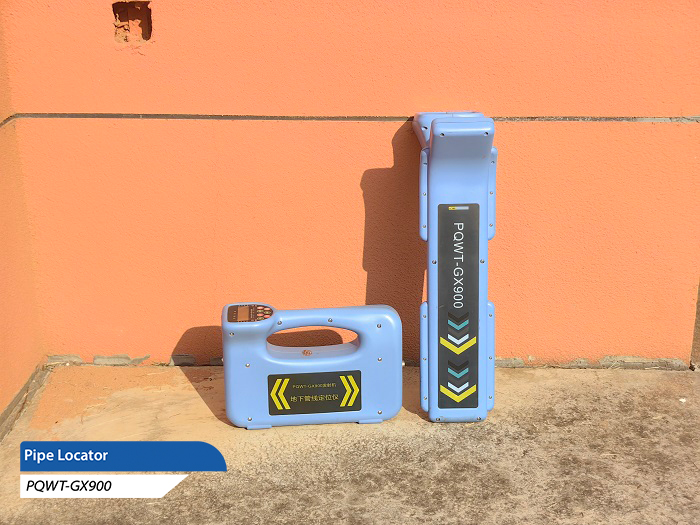Detection and leakage testing of underground pipelines is of paramount importance in modern cities. Such work ensures the integrity and safety of pipelines and prevents potential risks and damages, and Pipe Cable Locator, such as PQWT-GX900, provides an effective solution in this field by means of advanced detection and leakage testing principles and methods.

I. Peak method
Peak method is a commonly used detection method. When the receiver of the detector is located directly above the pipeline, the signal indication value will increase and the sound will be enhanced at the same time. The core of this method is to adjust the gain so that the receiver can effectively detect the signal above or near the pipeline. The peaking method utilizes a horizontal coil to pick up the strength of the horizontal component of the electromagnetic field. The strength of the magnetic field response is maximized when the front of the receiver is perpendicular to the path of the pipeline. This is because at this point the coil is closest to the pipeline and also the magnetic field where the coil is located is the strongest. When the receiver is moved along both sides of the pipe line, the magnetic field response strength on both sides is symmetrical and decreases gradually. This is because the distance of the coil from the pipe line increases, and at the same time the direction of the magnetic field lines of force is no longer perpendicular to the plane of the coil, resulting in less magnetic flux passing through the coil. The shape of this signal response resembles a mountain peak, hence the name "Peak Method".
Peak and valley method
Different from the peak method, the peak and valley method requires the detector receiver in the pipeline directly above the signal indication value is small, and the receiver sound indication without any sound. The same need to adjust the gain, so that the receiver in the pipeline directly above the signal and sound indication, while in the pipeline on both sides of the sound. The peak and valley method uses a vertical coil to measure the vertical component of the electromagnetic field. The magnetic field on the target cable consists of numerous circular magnetic lines concentric to the cable. When the receiver is located directly above the cable, the signal response is small and there is a peak on each side. This is because the vertical component of the magnetic lines of force directly above the cable through the receiver's vertical receiving coil is zero, resulting in zero or very little magnetic flux through the receiver's vertical coil. As the receiver moves along the sides of the line, the response of the instrument increases and then decreases as it moves away from the line. The shape of this signal response is similar to a valley, and is therefore called the "peaks and valleys" method.
Third, step voltage method
Step-by-step voltage method is a method used to detect the faults of directly buried pipeline to the ground and skin breakage faults. By connecting the "A" frame to the receiver, the receiver can receive the leakage signal sent by the transmitter through the fault point overflow. This method is particularly suitable for fast and accurate localization of insulation faults in direct buried cables and underground metallic anti-corrosion pipes. Especially for those dead grounded direct buried cables, the traditional high voltage flashover method may not be able to locate accurately because of small discharge energy and light sound. The step voltage method can effectively solve this problem and provide a strong guarantee for the safe and stable operation of urban infrastructure.
To summarize, there are various principles and methods of Pipe Cable Locator's detection and leakage detection, and each method has its unique application scenarios and advantages. In actual operation, it is necessary to choose the appropriate method according to the specific type of pipeline, environmental conditions and detection needs. PQWT-GX900 and other multifunctional Pipe Cable Locator provide strong support for underground pipeline detection and leakage testing with its advanced technology and flexible operation.








